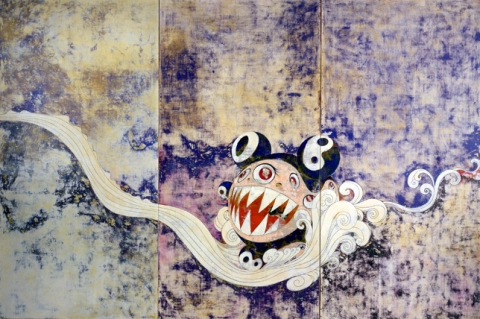Hand-painted painting reproductions - Movements - Contemporary Japanese Art
Imagine owning a museum-worthy piece of art, created by the greatest artists in history and reproduced by passionate and experienced painters. At POD, we offer you the opportunity to make that dream a reality. We reproduce the works of art of your favorite painters from the Contemporary Japanese Art art movement in the smallest details, so that you can enjoy them in your own home.
Our reproductions are made by experienced artists who use the best materials and techniques. We are committed to providing you with works of art of the highest quality, which will bring joy and inspiration to your family for generations to come.
Contemporary Japanese art represents a dynamic and evolving field that bridges traditional Japanese aesthetics with modern innovations, reflecting a rich tapestry of cultural and artistic expressions. This art form has experienced significant transformation since the late 20th century, driven by both global influences and a deep respect for Japan’s artistic heritage.
At its core, contemporary Japanese art is characterized by its diversity and experimentation. Artists working in this genre often draw on Japan’s long-standing artistic traditions while exploring new media, techniques, and conceptual approaches. This fusion of the old and the new creates a unique artistic landscape that is both rooted in history and forward-looking.
One of the defining features of contemporary Japanese art is its exploration of various media and formats. Traditional mediums such as painting, sculpture, and printmaking are complemented by innovative approaches that include digital art, video installations, and performance art. This broad spectrum of media allows contemporary Japanese artists to experiment with different methods and materials, pushing the boundaries of traditional art forms.
Japanese contemporary artists are known for their ability to blend cultural references with modern themes. Many artists incorporate elements of Japanese folklore, pop culture, and everyday life into their work, creating pieces that resonate with both domestic and international audiences. This approach not only preserves traditional Japanese motifs but also reinterprets them in the context of contemporary issues and global influences.
One prominent aspect of contemporary Japanese art is its engagement with social and political themes. Many artists use their work to comment on pressing issues such as environmental concerns, urbanization, and the impact of technology on society. By addressing these topics, contemporary Japanese artists contribute to important conversations about the future of Japan and the world at large.
The influence of global art movements is also evident in contemporary Japanese art. As Japan has become increasingly connected to the international art scene, its artists have absorbed and adapted elements from movements such as minimalism, conceptual art, and surrealism. This cross-pollination of ideas has resulted in a vibrant and diverse art scene that reflects both global trends and local traditions.
Another significant trend in contemporary Japanese art is the rise of collaborative and interdisciplinary practices. Artists often work with other creatives, including designers, architects, and performers, to create multifaceted works that challenge traditional boundaries. This collaborative spirit fosters innovation and results in art that is both visually striking and intellectually engaging.
The art market in Japan has also evolved in response to contemporary trends. Galleries, museums, and art fairs have increasingly focused on showcasing contemporary Japanese artists, providing platforms for them to reach wider audiences. Institutions such as the Museum of Contemporary Art Tokyo and the 21st Century Museum of Contemporary Art, Kanazawa play a crucial role in promoting contemporary Japanese art and fostering dialogue between artists and the public.
Contemporary Japanese art is also deeply intertwined with Japan’s urban environment. The rapid pace of urbanization and the complexities of city life are recurring themes in the work of many contemporary Japanese artists. Urban spaces serve as both inspiration and subject matter, reflecting the ways in which modern life shapes and is shaped by artistic expression.
In recent years, Japanese contemporary art has gained significant recognition on the international stage. Japanese artists are increasingly featured in global exhibitions, biennales, and art fairs, contributing to a growing appreciation of their work worldwide. This international visibility helps to highlight the unique contributions of Japanese artists to the global art scene and fosters cross-cultural exchanges.
In summary, contemporary Japanese art is a rich and multifaceted field that reflects the interplay between tradition and innovation. It encompasses a wide range of media and styles, engaging with both local and global issues. Through its diverse and experimental approaches, contemporary Japanese art continues to evolve, offering new perspectives on the intersection of culture, society, and creativity. Its vibrant and dynamic nature ensures that it remains a significant and influential force in the global art world.





